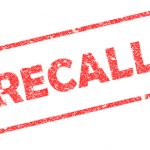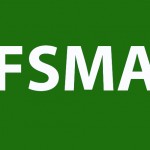Is the FDA Unified and Listing Systems (FURLS) system with its newly updated electronic Export Listing Module (ELM) a pathway to overseas markets or just one more regulatory hurdle that has been put in place by the U.S. government to impede export of U.S.-processed foods? A review of the new updates is needed to provide the answer to this question.
Regardless of the answer to this question, whether your company is already participating in this program or is looking for new markets outside the United States in countries that do not require the FDA listing of U.S. food companies, you must understand how the FURLS system works, how to electronically register and better understand the regulatory challenges of the importing country.
The FDA recently released a notification that their FDA Unified and Listing Systems (FURLS) system has been updated to include an Export Listing Module (ELM). This update allows U.S. food manufacturers to electronically submit, and for FDA to receive and process requests for inclusion on the export lists for FDA-regulated food products and present these lists to countries that require them, whether your company is already participating in this program or is looking for new markets outside the United States.
As background, the FDA has established and maintains export lists for countries that require some assurance that U.S. food manufacturers exporting to these countries, at a minimum, meet all applicable food safety regulations enforced by FDA. These lists, in an unofficial way, serve as a “certification” by the FDA, representing the U.S. government, that either included facilities have provided information to the FDA to assert they are in compliance with the importing country’s regulations and requirements or, more likely, that the U.S. food manufacturer is meeting the currently applicable U.S. laws and regulations.
Other options for U.S. food manufacturers that are interested or already exporting to countries that do not require the FDA lists, include the FDA’s export certificates, which give the agency’s official attestation concerning a product’s regulatory or marketing status. The fact that FDA has issued an export certificate does not preclude FDA from taking appropriate regulatory action against a product covered by the certificate. CFSAN issues “certificates of export” for seafood, food additives and food contact substances. CFSAN issues “certificates of free sale” for land food, dietary supplements, infant formula, medical foods and foods for special dietary use. U.S. firms wishing to apply for an export certificate for a food product may log in to FDA Industry Systems and submit an online application through the Certificate Application Process.
 |
Need to learn more about supplier verification? TraceGains is here to help! Download our Foreign Supplier Verification Program Guidebook to learn the ins and outs of this complicated FSMA addition. TraceGains enlisted the help of Marc Sanchez, regulatory attorney specializing in FDA and USDA law, and Shawn Stevens, a global food safety lawyer, to provide insight and break down some of the confusion. |
Back to the FDA list option. It is important to note that companies may request to be included on these lists at any time; however, updates to the lists are only published quarterly by the FDA. Additionally, final listing decisions are made by the competent authority of the importing country. This is to say, there can be a short or lengthy process between the time when FDA updates the list for a particular country and when that country formally accepts the updated list. Since there is no downside for a company to appear on one FDA list or many (lists maintained for each country), this potential delay in official acceptance of the list should drive U.S. food companies to apply to be on all of the country lists, before there is a specific need to do so. Remember the old adage, “When you are in a hurry, inevitably you end up standing in the slowest line.”
Market access for U.S.-manufactured dairy products to the EU, China and Chile, for example, are subject to these listing requirements in order to gain market access. Do ensure you have verified that your dairy product meets the standards and labeling requirements for the country to which you wish to export, as it is likely that a foreign country’s dairy product requirements will not necessarily be the same as what is found in the United States. Another example is that in order to export U.S.-manufactured collagen and gelatin products to the EU, companies must provide a laboratory report from an accredited, private laboratory demonstrating that the products comply with the established criteria. For exporters of U.S.-manufactured/processed seafood products to the EU or China, inclusion on the FDA-maintained list is required, as well as an export certificate which is provided by the National Oceanic and Atmospheric Administration (NOAA) Seafood Inspection Program after FDA listing has been completed.
Finally, U.S.-manufactured infant formula exports to China are also subject to listing requirements. It should be noted that the China Certification and Accreditation Administration (CNCA) defines infant formula as food intended for children up to 36 months of age, known as “infant and young children formula”. This differs from the U.S. definition. Please be advised that CNCA requires new applicants to submit evidence of third-party certification of compliance with Chinese laws and regulations as part of the application process. CNCA also requires that infant formula manufacturers/processors submit an Establishment Registration Application with additional information to CNCA.
One of the most important keys to gaining access to overseas markets is to get your company enrolled on as many of these FDA lists as possible, obtain FDA certificates of free sale ahead of time, and make sure you update your information and keep it current within the various FDA electronic database systems.
Whether your company faces a foreign market access challenge via being a part of the FDA List or needing to get an FDA “Certificate of Free Sale” or just have questions related to moving product out of a U.S. port and into a foreign port, contact a reputable consulting firm for assistance.








